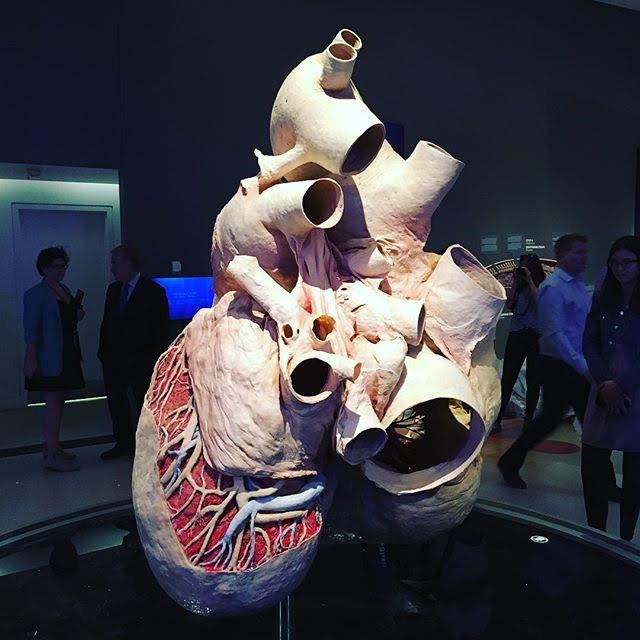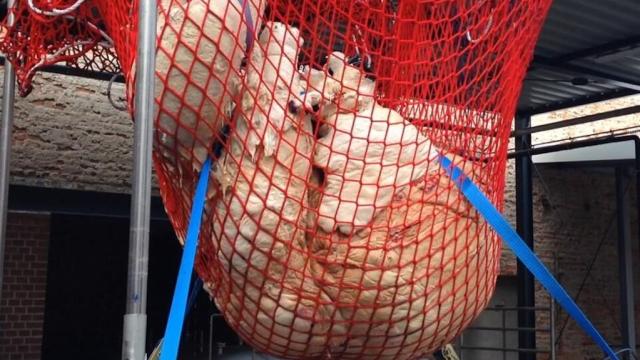It’s not every day one stumbles upon a 181kg whale heart, but when you do, you put that crap in a museum. Thankfully, that’s exactly what the folks at the Royal Ontario Museum (ROM) did when they uncovered a dead blue whale in Newfoundland back in 2014. Since then, biologist Jacqueline Miller and her team at ROM have been working tirelessly to put the massive organ on display, and today, they finally did just that.
Image Courtesy of Jacqueline Waters, Royal Ontario Museum
While the finished product looks pretty — or at least as pretty as a dead whale ticker can be — getting it museum-ready was a process. “[2014] was a very bad year for ice everywhere, including the Great Lakes, and nine blue whales were found dead in the ice,” Miller told Gizmodo. “Usually, blue whales sink, but two of them managed to remain buoyant and washed up on shore in Newfoundland late that winter.”
Thankfully, cold Atlantic waters had kept one of the whales’ hearts extremely well-preserved. While other organs might not have fared so well, in this case the blue whale’s anatomy offered some extra protection.
“The heart itself is kind of protected from some [decay] because it sits in its own sack in the chest cavity, something called the pericardial sac. So it doesn’t directly have contact with the bacterial activity that’s acting on other tissues in the whale.”
Still, the whale had been decaying for at least a couple of months, so Miller and her team had to act quickly in order to get it preserved for display. It took four people to extract the heart, put it into a (literal) dumpster bag, then place the organ into a refrigerated truck. Next came the hard part: Figuring where to plastinate a dead, giant whale heart. For those who aren’t familiar with preserving dead things, plastination involves draining body fats and water and impregnating the tissues with plastic so that a body part can be used for educational purposes. That’s how the famous Body Worlds exhibit keeps those long deceased bodies looking so lively!
“Plastination requires a very specific facility, and there are no facilities in North America that had a chamber that would be large enough,” Miller explained. She and her team had to ship the heart to Germany — and yes, they used bubble wrap to send it.
“There must have been several hundred feet of it,” Miller said. It took seven people eight hours to thoroughly wrap the whole thing.

The blue whale heart on display at ROM. (Image Courtesy of Jacqueline Waters, Royal Ontario Museum)
It then took another six months to dehydrate the heart and plastinate all the fat. Before the plasticised heart was completely hardened, the team was able to dissect it and shape it to make it palatable for the public — or as palatable as a salty ol’ whale heart can be.
After taking one look at this big beauty, it’s safe to say it was all worth it. The finished product could last up to a thousand years, according to Miller. “It’s been very humbling,” Miller said. “You think you know a lot, until you try to deal with something like this.”
There’s one key point Miller hopes all visitors to the museum take away from the experience.
“That it’s big,” she said.
